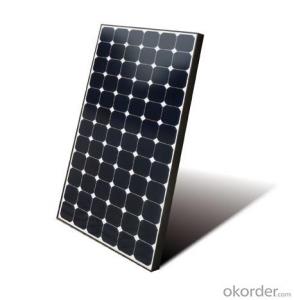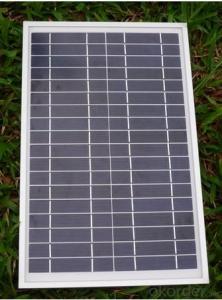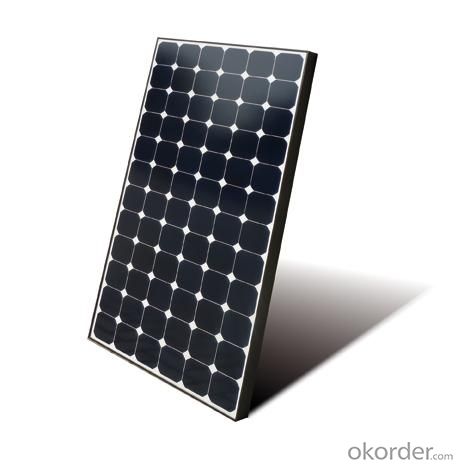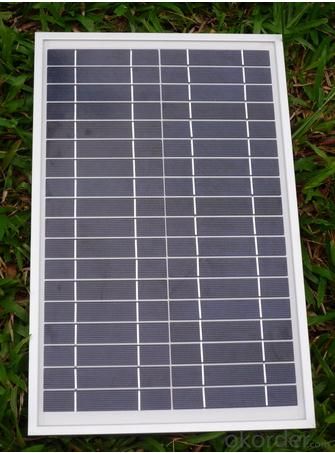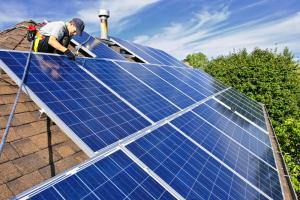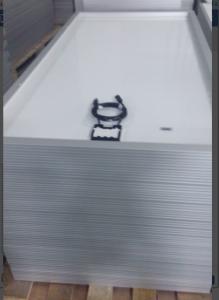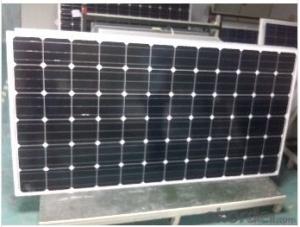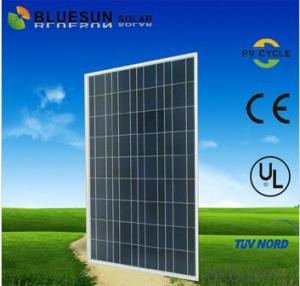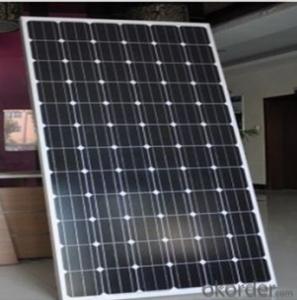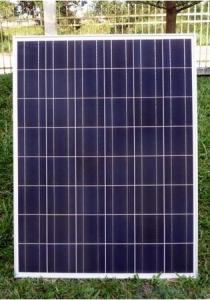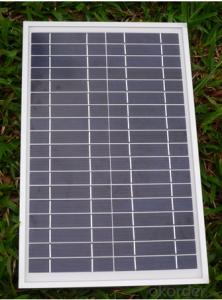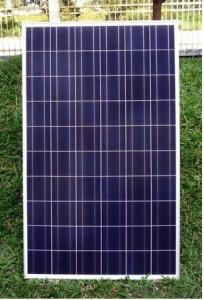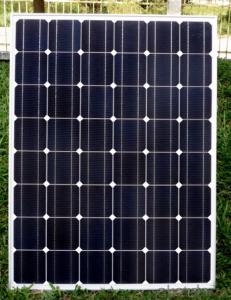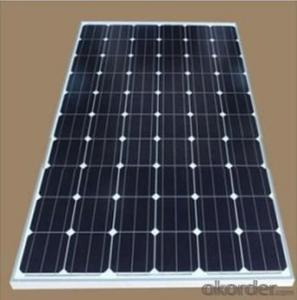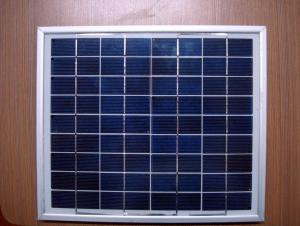Nivo Solar Panels - Poly Solar Panel 305W B Grade with Cheapest Price
- Loading Port:
- Shanghai
- Payment Terms:
- TT OR LC
- Min Order Qty:
- 100 watt
- Supply Capability:
- 10000 watt/month
OKorder Service Pledge
OKorder Financial Service
You Might Also Like
Specification
Poly Solar Panel 305W B Grade with Cheapest Price
Product description
A solar cell, or photovoltaic cell (in very early days also termed "solar battery"[1] – a denotation which nowadays has a totally different meaning, see here), is an electrical device that converts the energy of lightdirectly into electricity by the photovoltaic effect, which is a physical and chemical phenomenon.[2] It is a form of photoelectric cell, defined as a device whose electrical characteristics, such as current, voltage, or resistance, vary when exposed to light. Solar cells are the building blocks of photovoltaic modules, otherwise known as solar panels.
The efficiency of a module determines the area of a module given the same rated output – an 8% efficient 230 watt module will have twice the area of a 16% efficient 230 watt module. There are a few solar panels available that are exceeding 19% efficiency. A single solar module can produce only a limited amount of power; most installations contain multiple modules. A photovoltaic system typically includes a panel or an array of solar modules, a solar inverter, and sometimes a battery and/or solar tracker and interconnection wiring.
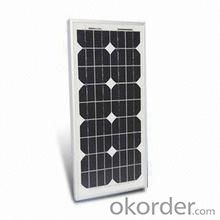
Application
Business
Home
Industry
Large project
Feature
1. A grade high efficiency solar cells.
2.TUV/UL/CE/CEC etc
3.Fast shippment
4.25 years warranty
5.OEM/ODM
Packaging
28pcs into one carton
Shipping
Material in stock can be produced (procedure 5-20days) right away after pre-payment confirmation. COSCO Mearsk MSCship to worldwide for safe shipping, don't worry about package damage or loss. It takes about 15-40 days to worldwide, Please note us your contact details include your phone number for easy contacting from shipping company officer.
- Q: My hubby and I are waiting to move in to our camper but have to figure out how many solar panels, batteries, etc. to get. I can't find the info per appliance for Watts and amps, but does anyone have a good, general idea of how many Watts it'd take to run the whole shabang? It's a 999, 25-foot Sportsmen tag-a-long, if that helps..It's got the following, and we'd like to run the propane things off of electric:*Refrigerator/freezer*Microwave*Oven/stove*AC/Heat*Will have a tv, phone chargers, laptop charger, but those will be unplugged when not in useThanks so much! It's such a headache.. You get SO MUCH different info from different places.. OI..
- Running an oven or stove on solar is not a practicality; too much power is needed, use gas. Ditto, heating using solar electricity is not a practicality, and AC would also be asking a lot. The other things, within limits, might be do-able. You'll be needing as many solar panels as you can fit on. If I was you I'd consult a solar installer about how big your battery bank should be once you have decided how many Watts of panels you can put on.
- Q: Why can't they put solar-panels on the blades and sides of the 300-500 foot tall turbines? Wouldn't this increase effeciency? Therefore, boosting pay-back time, profits, energy-output?
- No. The solar panels would never be balanced. Those blades need to be very balanced. Additionally, how would the solar panels get the power from a rotating blade to the ground? It is better to have separate units. What we ought to be concerned with is having large solar panel farms. These are counter-productive to going green, as they still require long and harmful power transmission lines. Solar panels ought to be put on top of buildings which would be using that power. Any additional power not used could be added to the power grid. For those types of clean energy that are not practical on the roof might get space near the building, keeping the transmission lines as short as possible. Large farms ought to be owned by the nation, keeping the cost of the power to the customer as low as possible. Power companies rip off consumers with their price gouging. It is time to let the burden of making a few rich at the expense of the many end.
- Q: Are there any free classes to learn about solar energy and building a solar panel
- Why don't you just call a solar energy company and ask them anything you need to know, or check out websites- they usually have page with faqs or info. The company I used has lots of info on their website and they were very helpful.
- Q: Exactly How much power will this kit produce? for example. Will it only be able to power the 2 light throughout an entire day or would it be able to power a couple TV's with a couple lights. Or a Refrigerator? washer dryer? I'm just wondering exactly what it will be able to do and if it's worth paying $200 for if it'll only power two lights. Don't get me wrong, That's great and will make a difference but i'm looking for something that will make a little bit of a bigger difference. Would the 80 watt monocrystalline solar panel be much better? if so, what would it be able to power? double?
- Harbor Freight Solar Panels
- Q: we are doing a fundraiser to have students pledge to make donations for a solar panel instalation on one of the school buildings. I am looking for a slogan for the campain.
- nasa solar panels seem to be better than silica / silicone (i forgot the exact chemical) they make them with ink and aluminum then case them in glass, they are supposed to last like 30 years or something. good stuff. anyway a SLOGAN: solar pannels save money, and over the long run allow the school to save tht momney or use it somewhere else in the school, ie better food, better seats, better computers, whtever. maybe you can relate the campain slogan to what the savings will be used for. maybe a new scince program thats funded solely on the savings of the panels. but ok a slogan: IT'S OBSCEEEENCE, ROTFL... GIVE SOME DOLLAR$$ AND GO GREEEEEN!!!!!! eh, i know not so hot, gimme a minuet. lol LET'S MAKE THIS PANEL HAP'N CAP'N... MIB! LMAO THE SUN, FREE FUN, COME ON AT LEAST GIVE ONE (place pic of dollar bill below the ONE) good luck.
- Q: Can solar panels be used in areas with frequent power outages?
- Yes, solar panels can be used in areas with frequent power outages. Solar panels generate electricity from sunlight, which means they can continue to produce power even during power outages. By installing battery storage systems, the excess energy generated during the daytime can be stored and used during periods of low sunlight or power outages. This allows solar panels to provide a reliable source of electricity in areas with frequent power outages.
- Q: I want to add solar panels to my home. I was looking online and it seems there are so many different kinds! How does it hook up to the electrical grid? How much do I need for a 2000 sf home?
- There are different solar panels for different uses For a domestic home it all depends on how much electricity you are going to use per month or per year For a normal use home (2 adults, 2 children) I presume one need to install a panels that would produce about4 to 5000 Kilo wats of energy per year Based on the type and the out put of the panels the suppler and the person who is advising you will guide you how many panels you will be requiring to install Take a professional help They are better informed and also knowledgeable
- Q: How Is heat From the Sun Transferred into Currents From solar Panels? (Explain Deeply Please)
- Build okorder /
- Q: Why should I have a Generator if I have Solar Panels.....?
- There is now a completely portable (and ultra-high efficient) solar power generator which produces up to 800 watts of household electricity on demand when you need it most. News of this solar backup generator (it's the first off-the-grid breakthrough in 50 years) is spreading like wildfire all across the country!
- Q: I have this question for extracredit and I dont get it?How many 2V,2W PV panels would be required to supply a load that requires a 48-volt supply that can push at least 2.8 amps of current, if you assume each panel puts out A at 2 V? And how are the panels configured to supply the power requirements of the load?
- 4 in series for the 48V, a rack of 3 sets wired in parallel to give the current. (total of 2 panels)
Send your message to us
Nivo Solar Panels - Poly Solar Panel 305W B Grade with Cheapest Price
- Loading Port:
- Shanghai
- Payment Terms:
- TT OR LC
- Min Order Qty:
- 100 watt
- Supply Capability:
- 10000 watt/month
OKorder Service Pledge
OKorder Financial Service
Similar products
Hot products
Hot Searches
Related keywords
